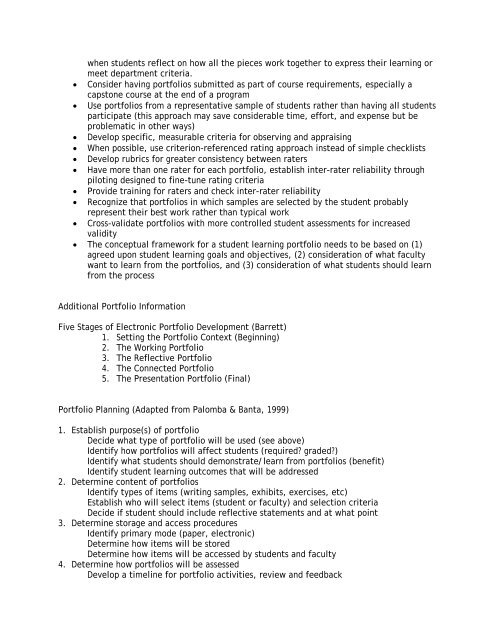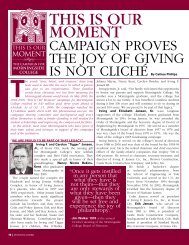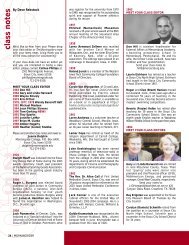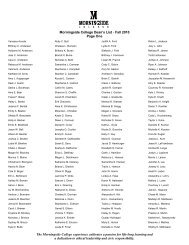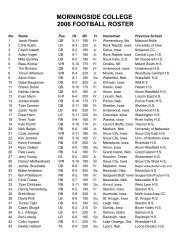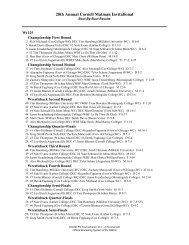Pros and Cons of Various Assessment Methods - Morningside College
Pros and Cons of Various Assessment Methods - Morningside College
Pros and Cons of Various Assessment Methods - Morningside College
Create successful ePaper yourself
Turn your PDF publications into a flip-book with our unique Google optimized e-Paper software.
when students reflect on how all the pieces work together to express their learning or<br />
meet department criteria.<br />
• <strong>Cons</strong>ider having portfolios submitted as part <strong>of</strong> course requirements, especially a<br />
capstone course at the end <strong>of</strong> a program<br />
• Use portfolios from a representative sample <strong>of</strong> students rather than having all students<br />
participate (this approach may save considerable time, effort, <strong>and</strong> expense but be<br />
problematic in other ways)<br />
• Develop specific, measurable criteria for observing <strong>and</strong> appraising<br />
• When possible, use criterion-referenced rating approach instead <strong>of</strong> simple checklists<br />
• Develop rubrics for greater consistency between raters<br />
• Have more than one rater for each portfolio, establish inter-rater reliability through<br />
piloting designed to fine-tune rating criteria<br />
• Provide training for raters <strong>and</strong> check inter-rater reliability<br />
• Recognize that portfolios in which samples are selected by the student probably<br />
represent their best work rather than typical work<br />
• Cross-validate portfolios with more controlled student assessments for increased<br />
validity<br />
• The conceptual framework for a student learning portfolio needs to be based on (1)<br />
agreed upon student learning goals <strong>and</strong> objectives, (2) consideration <strong>of</strong> what faculty<br />
want to learn from the portfolios, <strong>and</strong> (3) consideration <strong>of</strong> what students should learn<br />
from the process<br />
Additional Portfolio Information<br />
Five Stages <strong>of</strong> Electronic Portfolio Development (Barrett)<br />
1. Setting the Portfolio Context (Beginning)<br />
2. The Working Portfolio<br />
3. The Reflective Portfolio<br />
4. The Connected Portfolio<br />
5. The Presentation Portfolio (Final)<br />
Portfolio Planning (Adapted from Palomba & Banta, 1999)<br />
1. Establish purpose(s) <strong>of</strong> portfolio<br />
Decide what type <strong>of</strong> portfolio will be used (see above)<br />
Identify how portfolios will affect students (required? graded?)<br />
Identify what students should demonstrate/learn from portfolios (benefit)<br />
Identify student learning outcomes that will be addressed<br />
2. Determine content <strong>of</strong> portfolios<br />
Identify types <strong>of</strong> items (writing samples, exhibits, exercises, etc)<br />
Establish who will select items (student or faculty) <strong>and</strong> selection criteria<br />
Decide if student should include reflective statements <strong>and</strong> at what point<br />
3. Determine storage <strong>and</strong> access procedures<br />
Identify primary mode (paper, electronic)<br />
Determine how items will be stored<br />
Determine how items will be accessed by students <strong>and</strong> faculty<br />
4. Determine how portfolios will be assessed<br />
Develop a timeline for portfolio activities, review <strong>and</strong> feedback


